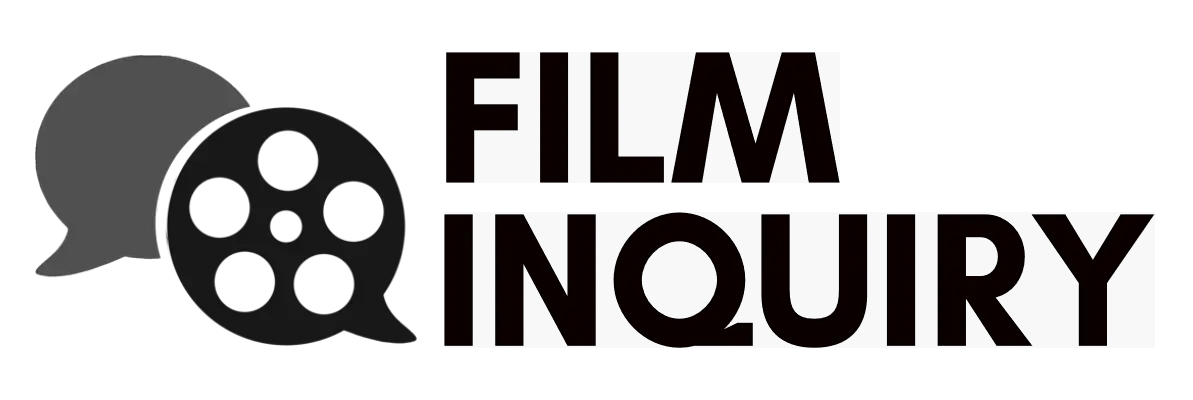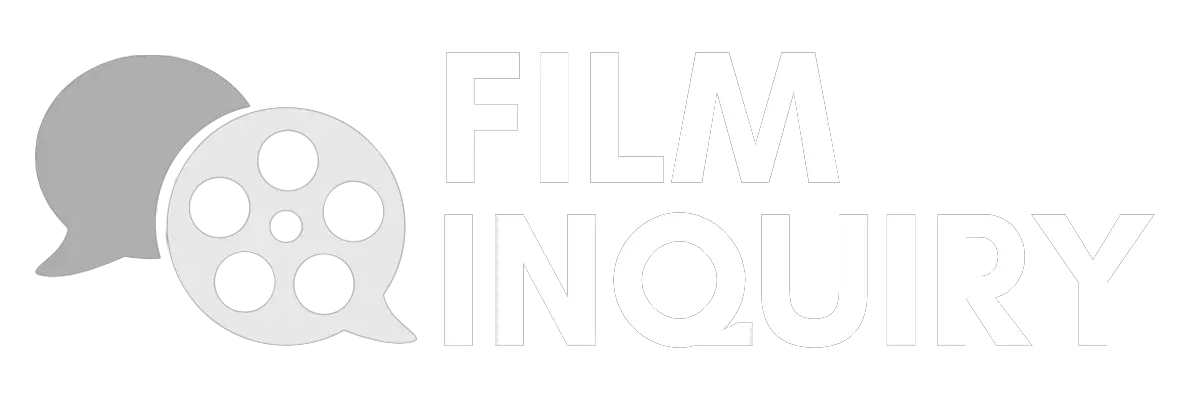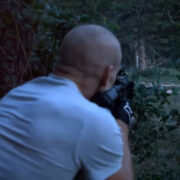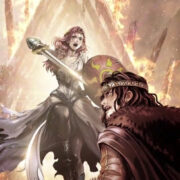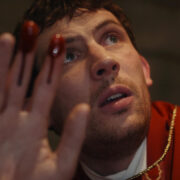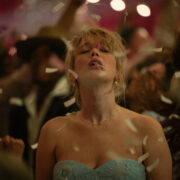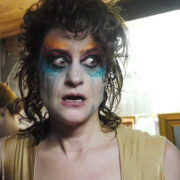MOANA 2: More Moana, More Problems
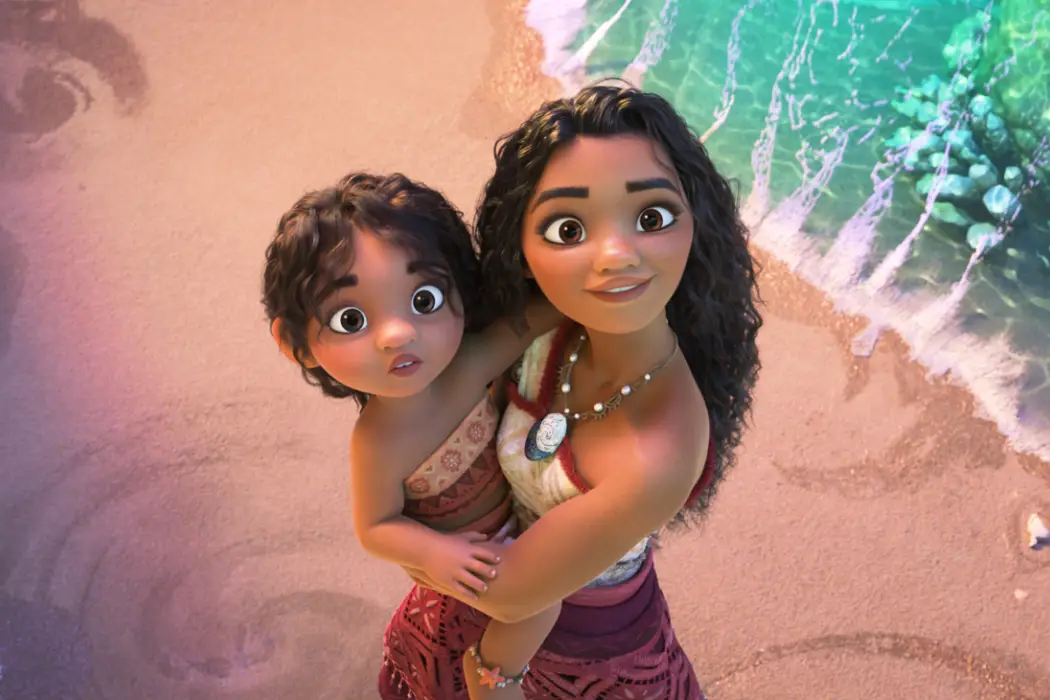
Film critic, Ithaca College and University of St Andrews graduate,…
Some time ago, the Walt Disney Company learned that there is significant money to be made in the pursuit of diversity and representation. And while these stories deserve to be told, few have been told as soullessly and as poorly as Moana 2.
I don’t particularly enjoy lining Disney’s coffers, and I don’t have kids, so naturally, I missed the boat on Moana when it came out back in 2016, and I similarly missed Moana 2 when it came out in late November 2024. The original Moana is one of Disney’s best efforts to better represent nonwhite cultures, or — depending on who you ask — its most successful operation so far at finding new consumers and selling them mugs, T-shirts, and plushies.
A sequel was inevitable. Yet the studio dragged its feet, seemingly uncertain about where to progress with a story that has so many obvious next steps. After work stalled on a Moana streaming series, the project was retooled as a cinematic sequel — and you can tell. The characters are all bouncy, exuberant, and ironic; the plot is rudderless and boring; and the story doesn’t feel properly resolved, instead hoping that fans will wait for Moana 3. The movie is worse than its predecessor by virtually every metric, save for that its music was written by someone who knows a word, any word, to rhyme with “island.”
The First Moana Was Never That Great, Anyway
The first Moana was a through-and-through success for Walt Disney Animation Studios. It was a more mixed bag among actual Polynesians, with controversy over Maui’s characterization as a big, obese man and Karla Mila of E-Tangata calling the character “Shrek of Polynesia … a pot-bellied, barrel-chested man-baby, with eyes too close together, pupils perfectly aligned with his widespread nostrils in nice savage symmetry. Here is an oafish, neckless wonder with large lips and an ooga-booga mask-like mouth.”
Maui’s design is a reminder that, at the end of the day, Moana is a white Westerner’s perspective of Polynesian culture, made by the two white dudes who created The Little Mermaid and Aladdin. They were not born in Polynesia, did not grow up with the sea at their doorstep, and have no stake in the stories and history of these people. Moana was only ever going to be mediocre, because you never get the sense that this is a story these people deserved to tell. It can never be culturally authentic.
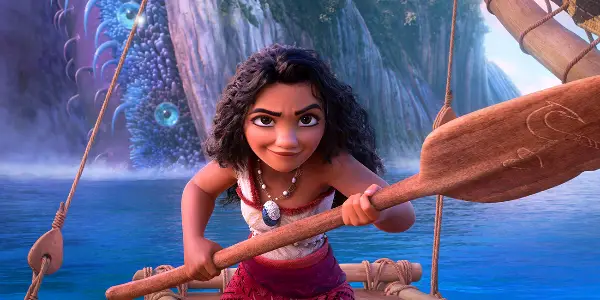
As a result, Moana can only ever aspire to be a good pastiche, a successful but shameless attempt at cashing in on Polynesian culture and history while also delivering that culture and history to a mass audience ready to buy Pua plushies and Maui action figures. Don’t get me wrong — there is goodness in the effort of doing that, and undoubtedly there will be children who grow up looking at Moana, seeing that she looks like them, and feeling inspired that they can be who they want to be, go on adventures, and save the world. That’s a worthy cause. But this was not John Musker and Ron Clements‘ story to tell.
Moana 2 Reaches For Cultural Authenticity
Disney made some changes behind the scenes to make sure that Moana 2 felt like a better representation of Māori people and their culture. Musker and Clements are out, off to colonize the seas of retirement, and of the three directors replacing them — David Derrick Jr., Jason Hand, and Dana Ledoux Miller — two of them have Samoan heritage. We see more of the islander culture, and there are even more Māori deities and a bigger focus on seafaring, or “wayfinding.” So why does the entire movie feel suffused with white perspective?
Every character talks with the same audience-tested fourth wall-breaking giddiness, like they were both in 2015 rather than hundreds of years ago. In the original Moana, only Maui (Dwayne Johnson) spoke in anachronisms, quips, modern irony, and asides to the audience; here, every character speaks like that, making Moana 2 feel less like a genuine attempt to capture a culture’s historical past and more like a lame, homogenous, TikTok cash-grab. The mercilessly modern screenplay hammers every character into the rigid form of a cliché Disney hero or sidekick, effectively colonizing the world of Moana with the slick evil of market-tested, focus-grouped capitalism. The character designs also all look the same — like they walked right out of Pixar’s Lightyear or Elio or Disney’s Strange World.
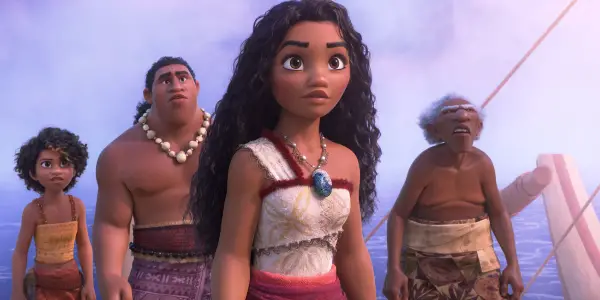
This film follows Moana (Auliʻi Cravalho) as she attempts to undo a curse that prevented her people from connecting with other islanders for a thousand years. For some reason, this involves dredging an island up from the bottom of the ocean. Without that island, the disparate Polynesian peoples will always be fragmented and don’t know how to travel the ocean, which feels racist and sort of plays into the “ignorant savages” trope the first film narrowly avoided. (It’s never even clear why exactly Moana needs to physically touch this island to lift the curse — despite the film explicitly telling me exactly what was happening in every scene, the stakes of the climax and rules of this curse are super unclear.) The characters’ ultimate goal, then, is to connect the islands and go discover more islands — as though the best story Disney could give the Māori people was a white Western idealist colonialist adventure narrative.
The frustrating part is that actual Polynesian history supports the idea that these seafaring peoples had a prolonged period where they didn’t build ships and explore — Moana is actually rooted in historical fact! Termed “the long pause,” this happened shortly after the Lapita people explored and inhabited West Polynesia and Melanesia. A thousand years passed before the Polynesians continued exploring eastward, a period that continues to perplex historians and that forms the foundation of Moana’s story. Moana 2 retcons this long pause into a heroes’ journey frozen in time by a mystical curse, which would be an interesting story if it actually explained why and how the other island people stopped building ships, too.
What Happened to the Animation?
If the first Moana doubled as a tech demo for Disney’s great new water animation, Moana 2 is a demo for how much slime Disney can put in a motion picture. Not since the Nickelodeon Kids’ Choice Awards has this much slime been on-screen at once. Characters are constantly slipping in goop or getting sloppily sneezed upon. A scene in which a slimy blobfish slithers over Moana’s face after she’s paralyzed by poison darts feels like fetish content that children should NOT be exposed to.
The animation this time is noticeably worse — basically straight-to-video quality, though the bar for straight-to-video animation has dramatically risen since the days of Mulan II and Aladdin and the King of Thieves. The physics are totally off — characters fly and flip through the air weightlessly, and Moana swings around her ship’s mast like a tetherball. Maui at one point leaps into the water with all the weight of an acorn.
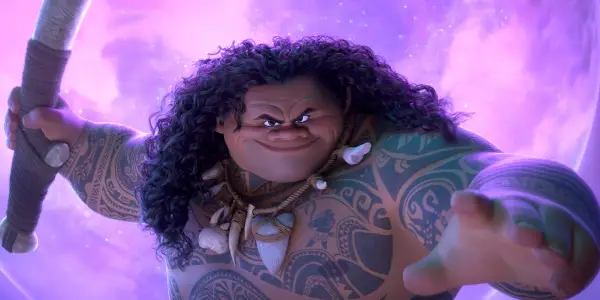
I believe the directors think their audience is stupid. Scenes are shot, staged, and edited as though they are allergic to stillness. The villain song sung by a mystical bat lady, Matangi (Awhimai Fraser), is remarkable. It’s the only song in Moana 2 where the performer is clearly giving it 110%, but the animation feels like it doesn’t believe in the vocal performance at all, stuffing so much theme park ride noise into the sequence that it’s impossible to take in the words, much less appreciate the performance or learn anything about the character. Every seven seconds seem purpose-built to go viral on social media, and every scene feels like it’s competing for my attention.
Who Wrote This Terrible Script?
For a project that took eight years to realize, the script is atrocious. I admire that a third of the film takes place in a giant clam, but that’s where my appreciation begins and ends. You learn immediately that Moana is a master wayfinder now because all the characters tell us, constantly. A new character, Tautai Vasa, is retconned so hard into the Moana lore in ways that make zero sense. Bat Lady doesn’t even get a payoff to her character. You never learn whether she’s actually a villain or not, you never learn what her real motivation is, and at the very end, you get an embarrassing “league of our own”-style tease for Moana 3.
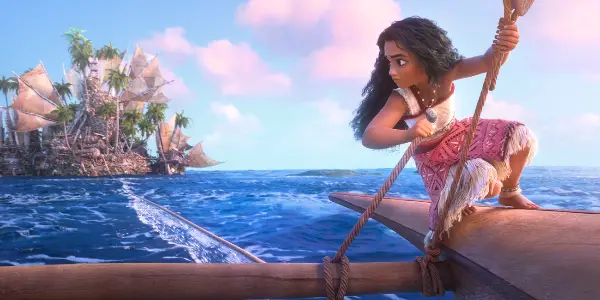
It’s super unclear how much time has elapsed between films, because now the entire culture of Moana’s island is a proud seafaring people that built MULTIPLE BOATS (with what fibers did they craft those cloth sails?!?!?!?!) yet Pua is still a piglet. I’m pretty miffed that none of these new characters died — you know, to create stakes in this high-stakes adventure story— and I thought that they might kill off a new coconut warrior character, but alas, he survives. Speaking of dead characters, Moana in this film has basically become the Ghost Whisperer, because her dead grandma (Rachel House) hangs out with her constantly, which feels totally emotionally hollow and undermines her very upsetting death from the first film.
Conclusion
Moana 2 is as soulless a cash grab as they come. It’s an awful movie made for babies, and literally every minute of the film was a challenge to sit through. There’s way too much slime and too much noise, and the characters constantly tell you exactly what’s going on in every scene in case you’re on your phone or are otherwise too stupid to work it out.
However, there are actually a few bright spots here. The first is that, unlike in Moana, the actors all mostly do their own singing. It’s a joy to hear Temuera Morrison’s smooth buttery paternal voice in the opening songs. Also, there’s a bit where Rose Matafeo has to speak-sing very quickly, and it’s quite good. Additionally, the coconut people are very kind to Heihei in this film and treat him like an emperor, which, as a Heihei fanboy, I appreciate. I’ll be extremely upset if anything bad happens to that dumb little chicken in Moana 3.
Does content like this matter to you?
Become a Member and support film journalism. Unlock access to all of Film Inquiry`s great articles. Join a community of like-minded readers who are passionate about cinema - get access to our private members Network, give back to independent filmmakers, and more.
Film critic, Ithaca College and University of St Andrews graduate, head of the "Paddington 2" fan club.
